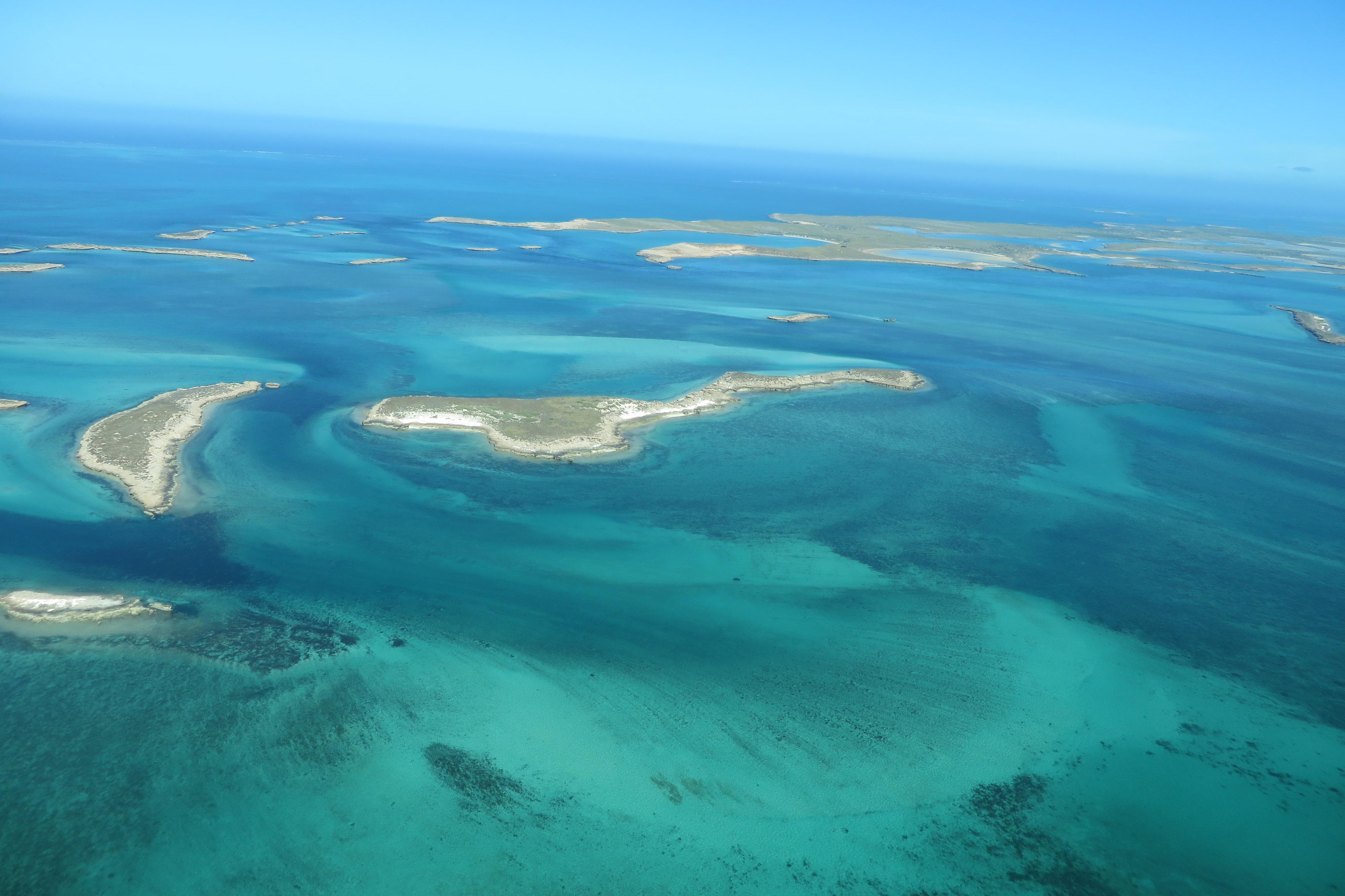Park Feature - Montebello Islands Conservation Estate
The Montebello Islands Conservation Park is a group of small islands sprinkled like jewels among the turquoise waters of the Indian Ocean.
This article appeared in LANDSCOPE magazine Autumn 2022.
The islands are located 120 kilometres west of the town of Dampier in Western Australia and 8000 years ago were once part of mainland Australia. Rising sea levels flooded the coastal plain leaving low-lying limestone remnants—a scattered group of islands consisting of intertidal and subtidal coral reefs and sheltered lagoons. The Islands are surrounded by the 58,000-hectare Montebello Islands Marine Park. Collectively, the islands and marine park offer a wealth of opportunities for divers, fishers, snorkellers and anyone with an interest in natural values, human history and maritime heritage to explore. Fringing reefs, sandy beaches, sheltered coves, isolated mangrove stands and abundant marine life including turtles, dolphins, and dugongs await. The only access to the islands is by boat, making this a truly wild experience.The islands were named by French explorer Nicolas Baudin in 1801 after the battle of Montebello. The earliest known European shipwreck in Australia occurred in 1622 when the English vessel ‘Tryal’ was wrecked on what are now known as the Tryal Rocks, north of the marine park. The 46 survivors from the wreck were the first Europeans known to have landed on the islands and eventually returned safely to Batavia.
Bringing back biodiversity
The islands were once a popular base for late 19th century pearlers, who, it is believed, may have been responsible for the introduction of feral cats and black rats. This in turn led to the extinction of native fauna like the spectacled hare-wallaby (Lagorchestes conspicillatus) and golden bandicoot (Isoodon auratus).This group of remote islands is now a wildlife refuge. Careful work over several years to eliminate feral animals has provided a haven for reintroduced species from the mainland and other islands to
thrive. Spectacled hare-wallabies and golden bandicoots have been returned to Hermite Island, and three other mammal species that have benefited from this conservation work include the mala (a subspecies of rufous hare-wallaby Lagorchestes hirsutus) on Trimouille Island, the djoongari or Shark Bay mouse or (Pseudomys fieldi) on North West Island, and the boodie or burrowing bettong (Bettongia lesueur) on Alpha Island. The spinifex bird (Poodytes carteri) and black-and-white fairy-wren (Malurus leucopterus leucopterus) have now been introduced to the islands. To protect this unique wildlife, visitors are asked to abide by quarantine guidelines before setting foot on the islands.
Know your zones
The turquoise waters surrounding the islands are alive with an array of fish (more than 450 species), invertebrates (more than 1000 species), marine mammals, turtles and vast coral gardens. The marine park waters are divided into a series of zones, each allowing for different marine-based activities. Zones include areas for general use, recreational fishing, and sanctuary zones for the protection of marine diversity. There are two large sanctuary zones, or ‘no take’ zones, where fishing, including catch and release, is not permitted. It is important to know your zones.
An explosive past
In the 1950s, the islands and surrounding waters were used by the British government for atomic weapons testing. Code named ‘Operation Hurricane,’ in 1952 the first nuclear device was exploded in a ship (HMS Plym) off Cocoa Beach, Trimouille Island. In 1956, another two devices were exploded—one was placed on a tower at the northern end of Trimouille Island and the other on a tower on Alpha Island. Concrete plinths, bunkers, monitoring stations, scrap metals and other relics of this time can still be found on the islands. Low levels of radiation still exist, and visitors are advised to observe signage and limit their exposure on Alpha and Trimouille Islands to one hour per day and not to disturb the soil or remove any relics.
Planning your trip
As with all remote parks and reserves, visitors are advised to ensure they undertake appropriate planning, have effective communication and pack adequate fuel, food, water and first aid supplies to last the duration of your stay. There are no facilities or services on the islands. Charter vessels are available from the coastal towns of Dampier or Exmouth. Before leaving port, always check your vessel and equipment including footwear and camping gear and remove any soil, seeds and other plant material, or animals including insects to avoid introducing foreign pests to the islands. The introduction of pests (such as mice and rats) could be devastating to the native mammal and bird populations on the islands. Pets and fires are not permitted on the islands.When you leave, please take all your rubbish with you for disposal at a suitable facility on the mainland.
Camping at the islands
Visitors are encouraged to stay on their vessels overnight. Should you need to camp on the islands, please only camp on the beaches (or within 100 metres of the high tide mark, for a maximum of five nights) of Renewal Island, Hermite Island, Crocus Island, Bluebell Island and Primrose Island. Camping is also permitted on North West Island but only from April to September to avoid disturbing nesting turtles and emerging hatchlings. For updated camping arrangements please contact the Karratha Parks and Wildlife Service office on (08) 9182 2000.
Do it yourself
- Where is it? 120 kilometres west of Dampier
- Total area: Marine Park 58,331 hectares, Conservation Park 4169 hectares
- Recreational activities: Fishing, diving, snorkelling, birdwatching, photography.
- Nearest Parks and Wildlife Service Office, Lot 3 Anderson Road, Karratha WA 6714. Phone: (08) 9182 2000.
- For more information about planning a trip to the Montebello Islands, or download the MarineParksWA or Recfishwest apps.
